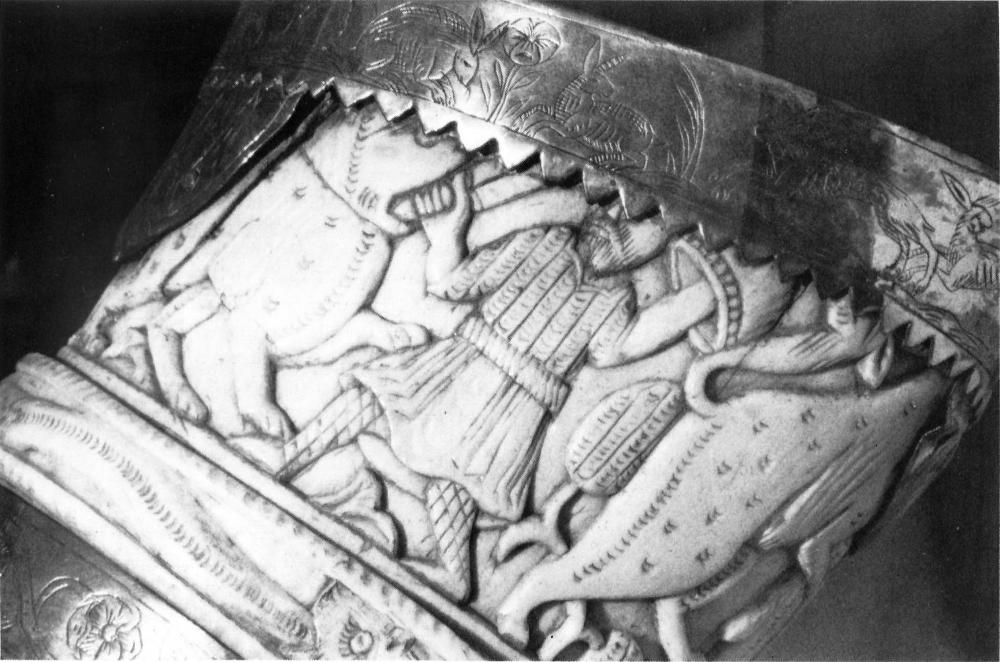
Shop Amazon - Create an Amazon Baby Registry
Hunter on an 11th century ivory drinking horn

A larger image of this Hunter on an 11th century ivory drinking horn, Victoria & Albert Museum


A number of superb 11th century ivory drinking horns and boxes survive, probably made in Muslim Sicily or southern Italy. Most show warriors and hunters with very convex hand-held bucklers, mail shirts, and broadswords without visible quillons. This was typical Arab or Berber gear, and could be seen as far east as Baghdad. (Victoria & Albert Museum, London)
Referenced on p14, The Moors - The Islamic West - 7th-15th Centuries AD by David Nicolle
A late 11th-century Sicilian carved ivory elephant's tusk showing a huntsman with a deeply convex leather shield, a broadsword which lacks quillons, and a mail shirt or hauberk worn inside a kilt or skirt. This style of armour seems to have been widespread in North Africa and Sicily, but had more in common with the military styles of the Arab Middle East than with those of Islamic Andalusia. (Victoria & Albert Museum, private loan, London, England; author's photograph)
Referenced on p.35, The Armies of Islam 7th-11th Centuries by David Nicolle & Angus McBride
A number of superb 11th century ivory drinking horns and boxes survive, probably made in Muslim Sicily or southern Italy. Most show warriors and hunters with very convex hand-held bucklers, mail shirts, and broadswords without visible quillons. This was typical Arab or Berber gear, and could be seen as far east as Baghdad. (Victoria & Albert Mus., London)
Referenced on as figure 671 in Arms and Armour of the Crusading Era, 1050-1350, Western Europe and the Crusader States by David Nicolle.
671 Carved oliphant, southern Italy or Sicily, late 11th century
(Private collection, on loan to Victoria and Albert Museum, London, England)
A 17th-century silver mount obscures the upper part of the ivory figure but a number of features are still clearly visible, most of which indicate Islamic inspiration. The figure wears a short-sleeved, probably mail, shirt which is likely to have continued inside his waist-sash and skirt. He holds a deeply convex shield in his fist and wields a sword without quillons. Such features were typical of Sicily and North Africa.